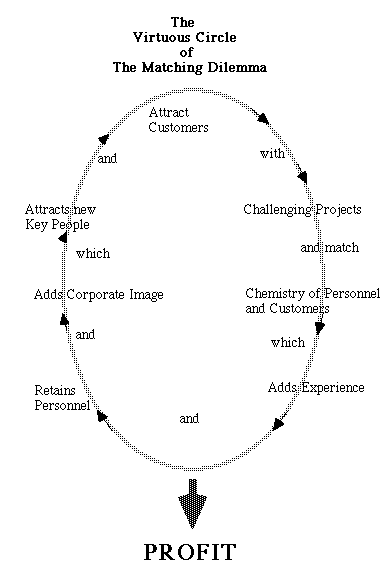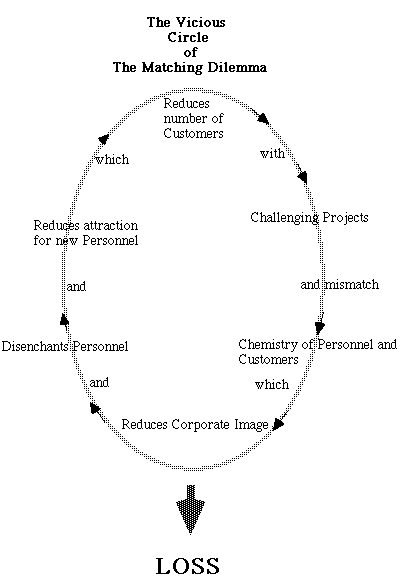

Unauthorised copying prohibited.
The matching of capacity with customer demand is a very tricky problem for the knowledge organisation. It involves a number of dilemmas and it is how the management solves this problem which in the end determines whether the organisation enters a Virtuous Circle or finds itself trapped in a Vicious Circle.
The virtuous circle reinforces itself. The problem of attracting customers and key people becomes easier and easier, the management of the knowledge organisation finds the projects easier and easier to match with competent teams...

Unfortunately also the vicious circle reinforces itself. The management finds it increasingly difficult to find attractive customers and competent key people. The chemistry of the teams and the customers are more and more difficult to match so the projects are more and more often solved dissatisfactorily, which reduces the attraction on the markets...
Managing the Knowledge Organisation usually means a managing a balance between the two dynamics: the virtuous circle and the vicious circle.

Next Chapter.
Previous Chapter.
Return to Knowledge Management Home Page.